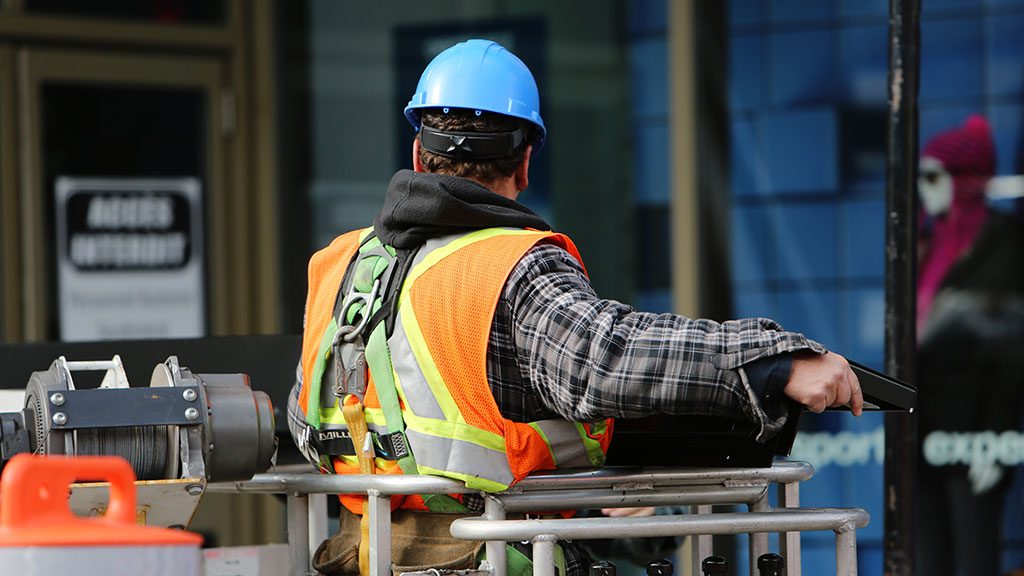On a scale of one to 10 what is your stress/demand score? On a scale of one to 10 what is your coping/resource score?
These are important questions to ask oneself said Paul Radkowski, CEO of the Life Recovery Program, an online program that helps build mental health resilience in organizations and their employees. Having a higher stress score and a lower coping score can ultimately lead to fatigue and/or burn out, which is common among construction workers.
“It’s useful information, it’s not meant to panic and freak out about,” said Radkowski. “The higher the stress score means it’s even more vitally important that we keep our coping scores as high as possible to help offset the demand score.”
There are things you can do to tip the scale in your favour, he added. The coping score, also called the self-care score, refers to the resources available to help mitigate stress. These could include sleep, social networks, hobbies, exercise and journaling, meditation or massage therapy. Construction workers in particular face a lot of demands, pressure and timelines.
“Think of a time in your life when your perspective made things less stressful and even though the stress was high you were able to mitigate it,” said Radkowski. “We’ve all done this. We wouldn’t have got this far in our lives and in our careers if we didn’t have some of these coping mechanisms. If it has worked in the past it’s about figuring out how can it work in the present, how can we tap into that.”
Just like keeping your bank account in check, it is important to keep your life accounts balanced and topped up, he added. This includes emotional, social, physical, intellection and spiritual.
It is up to leadership and management to be mindfully aware of providing a more balanced workload,
— Paul Radkowski
Life Recovery Program
“The lower the funds usually means the higher the stress and it feels like any slight hit is going to break the bank,” said Radkowski.
Burn-out is a syndrome which results from chronic workplace stress that has not been successfully managed and often includes feelings of energy depletion or exhaustion; increased mental distance or feelings of negativism or cynicism related to one’s job; and reduced professional efficacy.
The World Health Organization recently announced burn out will officially be listed in the international classification of diseases not as a medical condition, but as an occupational syndrome, explained Radkowski, adding it typically occurs when the balance of deadlines, demands, working hours, and other stressors are higher than the rewards, recognition and relaxation.
There is currently no way to differentiate symptoms of burn out from symptoms of other mental health conditions as many of the symptoms overlap with the characteristics of depression, including extreme fatigue, loss of passion and negativity.
Six main contributors to burn out in the workplace are: workload, sense of lack of control, reward, community, fairness and value.
“If those areas are mismatched between an individual and their job, these are some critical things that lead to burn out,” said Radkowski.
“From an organizational standpoint, ultimately, it is up to leadership and management to be mindfully aware of providing a more balanced workload (and other contributors) for workers versus burning them out with undue/unrealistic expectations, deadlines.”
Fatigue is also highly correlated to burnout so Radkowski often asks people what their average level of fatigue with 10 being the most severe.
He described fatigue as “even after what would seem a proper nights sleep someone still is waking up feeling not just tired but exhausted, especially if its ongoing for several nights.”
Radkowski recommends anyone who reports rating four or higher needs to go get checked out, adding they need to go to their physician and get full blood work and tests done.
Things the doctor may assess are stress, depression or other mental health issues, nutrition, quality of sleep, medication, thyroid function anemia, sleep apnea or a number of other medical conditions that might help explain the fatigue.
The construction industry has the highest rate of suicide and highest fatality rate due to substance abuse, with problem drinkers being two to three times more likely to have industrial accidents, making twice as many compensation claims and being absent 50 per cent more often, Radkowski explained.
For more information you can visit the website www.liferecoveryprogram.com.











Recent Comments
comments for this post are closed